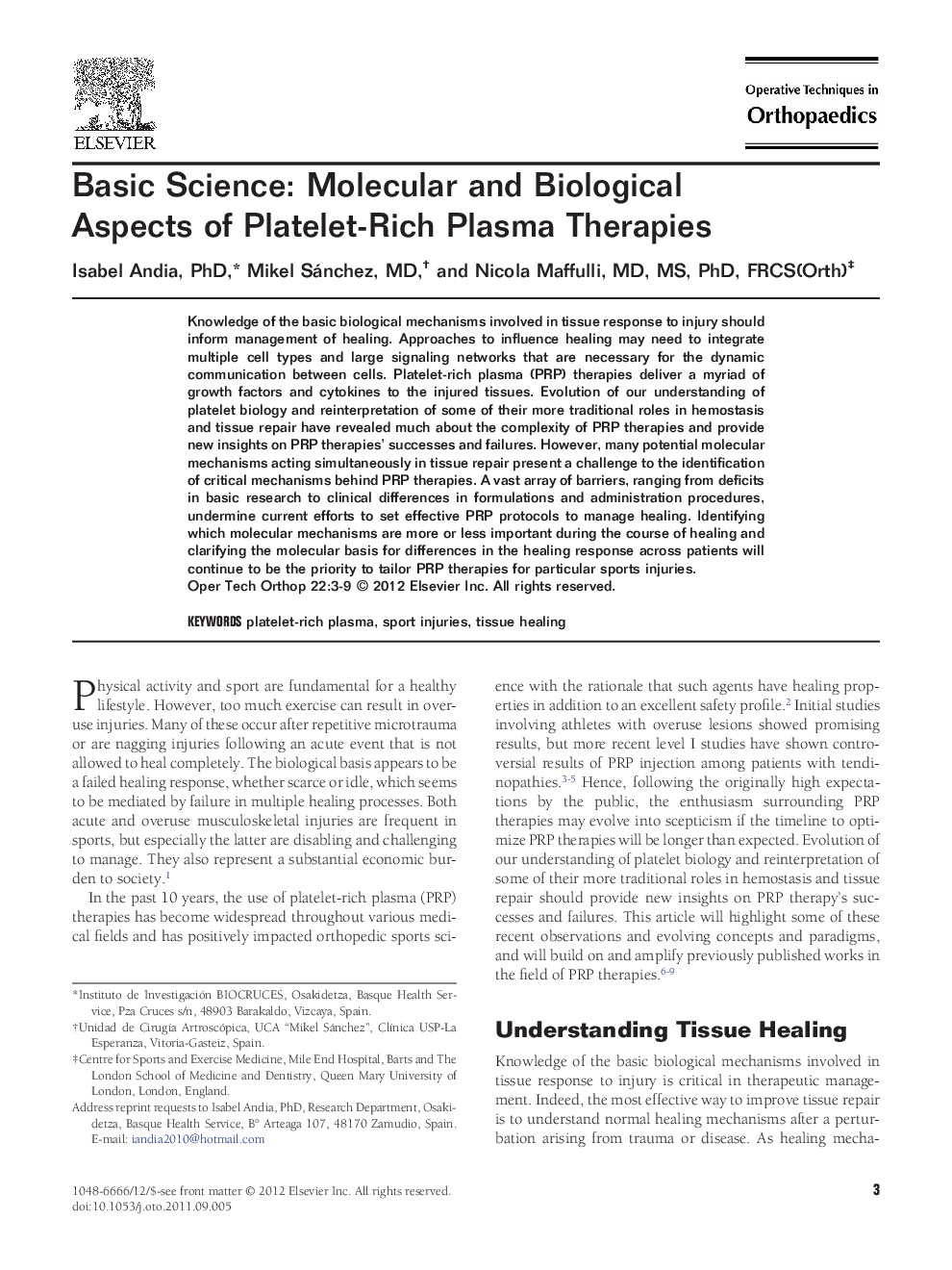| Article ID | Journal | Published Year | Pages | File Type |
|---|---|---|---|---|
| 4079017 | Operative Techniques in Orthopaedics | 2012 | 7 Pages |
Knowledge of the basic biological mechanisms involved in tissue response to injury should inform management of healing. Approaches to influence healing may need to integrate multiple cell types and large signaling networks that are necessary for the dynamic communication between cells. Platelet-rich plasma (PRP) therapies deliver a myriad of growth factors and cytokines to the injured tissues. Evolution of our understanding of platelet biology and reinterpretation of some of their more traditional roles in hemostasis and tissue repair have revealed much about the complexity of PRP therapies and provide new insights on PRP therapies' successes and failures. However, many potential molecular mechanisms acting simultaneously in tissue repair present a challenge to the identification of critical mechanisms behind PRP therapies. A vast array of barriers, ranging from deficits in basic research to clinical differences in formulations and administration procedures, undermine current efforts to set effective PRP protocols to manage healing. Identifying which molecular mechanisms are more or less important during the course of healing and clarifying the molecular basis for differences in the healing response across patients will continue to be the priority to tailor PRP therapies for particular sports injuries.
